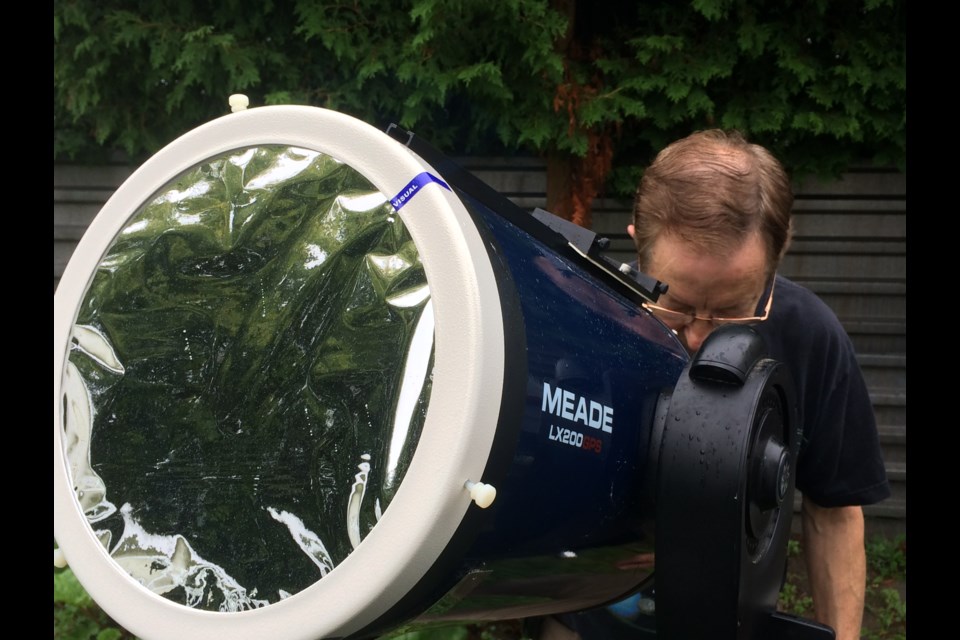Anticipation is mounting over Monday's rare opportunity to witness a total solar eclipse cutting across the entire United States. How much people will see, depends on where they live. The total solar eclipse will be visible from Oregon to South Carolina, along a 65 mile wide path.
Members of the North Bay Astronomy Club will start setting up their telescopes around noon Monday in preparation for what will be a partial eclipse for this area.
"We're not actually going to see much darkness here because the moon is only going to cover about 65 percent of the sun. So there's still going to be lots of sun light visible," explained club member, Merlin Clayton.
Clayton says the peak time to watch will be around 2:20.
"Ten after one is the first contact when the moon just starts to slightly move into the sun, then at 3:40 in the afternoon, it's all done, the moon is finally leaving the sun. So in between that, we're going to be viewing the sun and seeing what the eclipse looks like."
Telescopes will be set up in the grassy area near "The Boat" restaurant.
"We have different types of telescopes. I have two of them that I'll be bringing down, and they've got a solar filter on the front that takes out 98% of the heat and the light, so we can look right through our telescopes safely at the sun," explained Clayton.
"I've got another telescope called a Hydrogen Alpha Telescope and it gives a totally different view. When you're looking through that telescope, around the sun its totally black and you'll see flares coming off the side of the sun, which is kind of neat to look at."
The public is encouraged to use the telescopes and talk to the members.
"Definitely. We want as many people down there as we can to view this rare eclipse and enjoy it. I love talking about things like this, so the more questions, the better."
Clayton can't stress enough the importance of using proper eye protection to prevent permanent damage from happening. The club is handing out ISO approved sunglasses free of charge. He says the glasses are made from the same material as the solar filter on his telescope.
"I've got ISO safety approved solar sunglasses that you can put on over your regular glasses and view the sun that way. You have to check each time you're going to look through them, that there's no holes or scratches in the lens because they're made out of very thin tin foil, so they can get damaged easily. Make sure that they're in very good shape before you put them on. You put them on first and then you look up to the sun so you don't get any rays of the sun into your eye."
In the United States, the U.S. Fire Administration has issued a warning that there may be counterfeit sunglasses and viewers being sold in that country.
"Only glasses and viewers verified by an accredited testing laboratory to meet ISO 12312-2 are safe to use when viewing the eclipse. NASA recommends that eclipse watchers refer to the American Astronomical Society website for a list of reputable vendors selling solar glasses and viewers."
Clayton remembers where he was 38 years ago for the last total solar eclipse viewed 'from the contiguous United States', back in 1979.
"I was out at the old Sunset Public School on Lakeshore Drive and I had two classes come out, and I had my solar filter on my telescopes, and the kids had a look through them. That was quite awhile a go," he laughs.
"Trying to get another solar eclipse over our area is difficult, but on August 11th, 2024, if you're in Toronto, you're going to see a total eclipse. So everybody is going to head to Toronto or Southern Ontario to view that."
